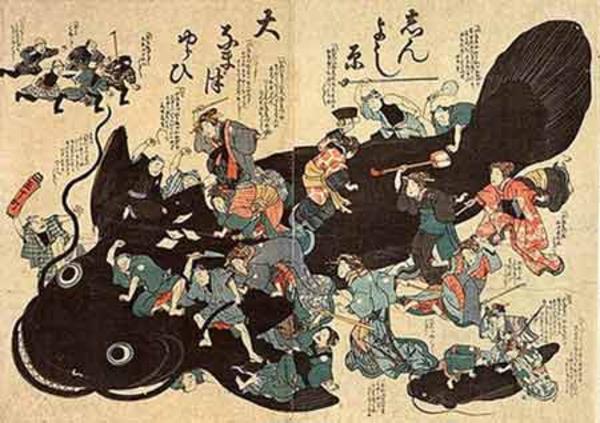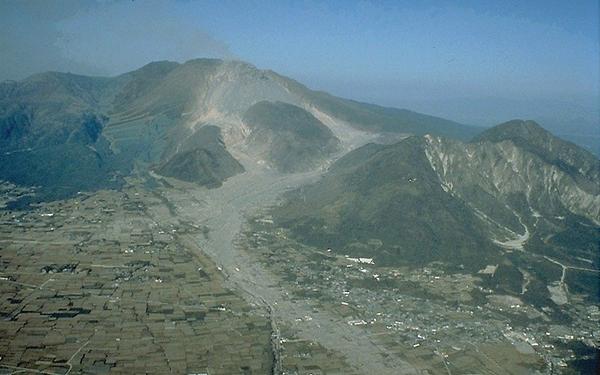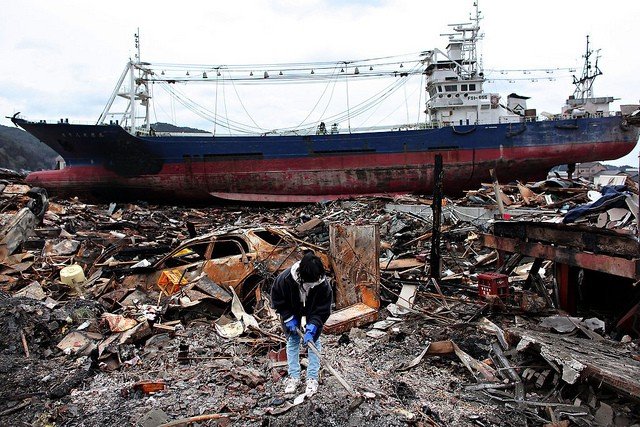Japan is known for its numerous earthquakes and tsunamis. Earthquakes constantly happen in Japan, but they are often just small tremors that do not disturb anyone. However, throughout history many strong earthquakes have occurred and formed large tsunamis. In this article, we will learn about some of the tsunamis that occurred in Japan.
Table of Content
Hakuho - 684 AD
The first tsunami that occurred in Japan was on November 29, 684 in the regions of Nankaido, Shikoku, Kii, and Awaji. It is estimated that the earthquake had a magnitude of 8.4, and the number of deaths is unknown.
Sendai - 869 AD
The Sendai region was hit by a large wave that caused flooding extending 4 km from the coast. The city of Tagajo was destroyed, with an estimated 1,000 casualties. The earthquake responsible is called Sanriku.
Nankai - 887 AD
On August 26, 887, a great earthquake that hit Osaka, Shiga, Gifu, and Nagano caused a tsunami that flooded the coastal region of Osaka; the tsunami was also observed on the coast of Hyuga, Miyazaki.
Kamakura - 1293 AD
A magnitude 7.1 earthquake caused a tsunami that hit Kamakura, resulting in over 23,000 deaths including those from the fires started by the earthquake.
Nankai - 1361 AD
On August 3, 1361, during the Shohei era, an earthquake of 8.4 struck Nankaidō followed by a tsunami that hit Yukiminato and Awa, destroying more than 1,700 houses and drowning over 60 people in Awa.
Nankai - 1498 AD

On September 20, 1498, a 7.5 magnitude earthquake occurred and caused a tsunami. The port in Wakayama was damaged by a tsunami several meters high. More than 30,000 people died. The building around the Great Buddha of Kamakura (7m height) was swept away by the tsunami.
Nankaidō - 1605 AD
On February 3, 1605, an 8.1 earthquake caused a tsunami over 30 meters high that was seen on the coast of Boso and on Kyushu Island. More than 3,600 people drowned in the Shishikui area. The wave height reached 6-7m in Awa, 5-6m in Kannoura, and 8-10m in Sakihama. In total, there were over 5,000 drownings.
Seikaido-Nankaido - 1698 AD
On December 22, 1698, a major tsunami hit Seikaido-Nankaidō.
Hoei - 1707 AD
On October 28, 1707, during the Hoei era, an earthquake with a magnitude of 8.4 caused a tsunami of up to 10 m in height that hit Kochi. More than 29,000 houses were destroyed and washed away, resulting in 30,000 deaths. In Tosa province, 11,170 houses were washed away, and 18,441 people drowned. About 700 people were killed and 603 houses were washed away in Osaka, with waves reaching up to 20 meters in Tanezaki.
Hokkaido - 1741 AD
On August 29, 1741, the western side of Hokkaido was hit by a tsunami associated with a volcanic eruption of the Oshima islands. The cause of the tsunami is a large landslide triggered by the eruption. 1,467 people were killed in Hokkaido and 8 in Aomori.
Yaeyama Islands, Okinawa - 1771 AD
A magnitude estimated tsunami occurred near Yaeyama Islands in the ancient Ryukyu Kingdom (present-day Okinawa) on April 4, 1771, around 08:00. The earthquake resulted in no deaths, but a tsunami killed approximately 12,000 people. It is estimated that the waves reached up to 80 meters. The tsunami also caused long-lasting effects, including epidemics, malaria, and ultimately destroyed and harmed the crops.
Mount Unzen, Nagasaki, Kyushu - 1792 AD
The eruption of Mount Unzen in Nagasaki caused earthquakes, avalanches, and even a tsunami that hit the Higo province and Ariake, resulting in over 5,000 deaths.

Nankai, Tokai, and Kyushu - 1854
The earthquake that hit the Ansei south coast of Japan was actually a set of three earthquakes, two magnitude 8.4 earthquakes and a 7.4 earthquake over the course of several days.
- An earthquake of magnitude 8.4 on November 4, 1854, near what is now Aichi and Shizuoka, produced tsunamis of 4-6 meters.
- Another magnitude 8.4 earthquake on November 5 in Wakayama. The resulting tsunami reached a height of 8.4 m. More than 1,443 people died.
- An earthquake of magnitude 7.4 on November 7, 1854 in the prefecture of Ehime and Oita;
The total result was 80,000-100,000 deaths. (Earthquakes + Tsunamis)
Edo (Tokyo) - 1855 AD
A big earthquake and tsunami struck Tokyo, causing the death of 4,500 to 10,000 people.
Meiji Sanriku - 1896 AD
On June 15, 1896, at around 19:36, a great underwater earthquake occurred off the coast of Sanriku, northeast of Honshu, which triggered tsunami waves that hit the coast about half an hour later. The earthquake did not kill anyone, but the tsunami reached waves of 30 meters and killed around 27,000 people.

Kanto - 1923 AD
The Great Kanto Earthquake, which occurred in eastern Japan on September 1, 1923, and devastated Tokyo, Yokohama, and surrounding areas, caused tsunamis that struck the coast of Shonan, the Boso Peninsula, Izu Islands, and the eastern coast of the Izu Peninsula. In Atami, waves were recorded reaching 12 meters. Examples of tsunami damage include about 100 people killed along Yuigahama beach in Kamakura and an estimated 50 people in Enoshima. However, tsunamis represented only a small proportion of the final death toll of over 100,000, most of whom died in the fire.
Showa Sanriku - 1933 AD
On March 3, 1933, the coast of Sanriku in northeastern Honshu experienced an earthquake of 8.1, destroying about 5,000 homes and killing 3,068 people, the vast majority as a result of tsunami waves. Iwate Prefecture lost 42% of its population and 98% of its buildings. Taro is now protected by a huge tsunami wall, currently standing 10 meters high and over 2 kilometers long.
Tonankai - 1944 AD
1,223 people were killed by the wave caused by an 8.0 earthquake on December 7, 1944, about 20 km from the Shima Peninsula.
Nankaidō - 1946 AD
The Nankai earthquake on December 21, 1946, had a magnitude of 8.4 at 04:19 (local time). It caused a wave that swept away 1,451 houses and resulted in 1,500 deaths.
Niigata - 1964 AD
28 people died and entire buildings were destroyed due to liquefaction. The tsunami destroyed the port of 新潟 (Niigata).
Okushiri, Hokkaido - 1993 AD
A devastating tsunami occurred along the shores of Hokkaido, resulting from a magnitude 7.8 earthquake, 130 km off the coast, on July 12, 1993. Within minutes, the Japan Meteorological Agency issued a tsunami alert, which was broadcast by NHK in English and 日本語. However, it was already too late for Okushiri, a small island near the epicenter, where some waves reached 30 meters and struck within two to five minutes of the earthquake. Despite being surrounded by tsunami barriers, Aonae, a small village, was devastated in the following hour by 13 waves over two meters high that came from various directions. Of the 250 people killed as a result of the earthquake, 197 were victims of the tsunami that struck Okushiri; the waves also caused deaths along the coast of Hokkaido.
Tsunami in Japan - Tohoku - 2011 AD
On March 11, 2011, along the Pacific coast of Japan, a magnitude 9.0 earthquake produced a 10-meter-high tsunami along the northeast coast of Japan. The wave caused widespread devastation, with an official count of 18,550 people dead. The largest recorded tsunami in Miyako, Iwate reached a total height of 40.5 meters. Additionally, the wave caused several explosions at the Fukushima nuclear power plant. Tsunami alerts were issued along the entire Pacific coast.

As devastating as it may be, we cannot be afraid, the unexpected can happen anywhere. Not to mention that throughout Japan's history, all these deaths caused are nowhere near the deaths caused by violence and traffic recklessness in Brazil.
